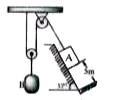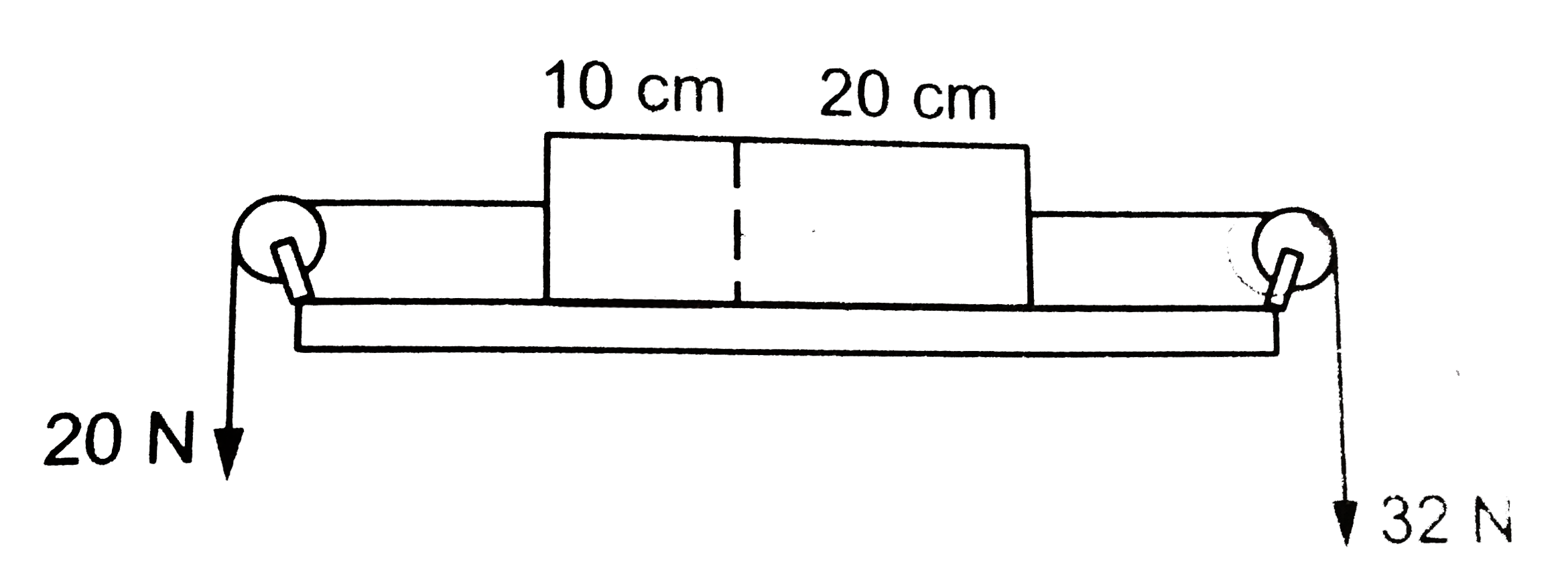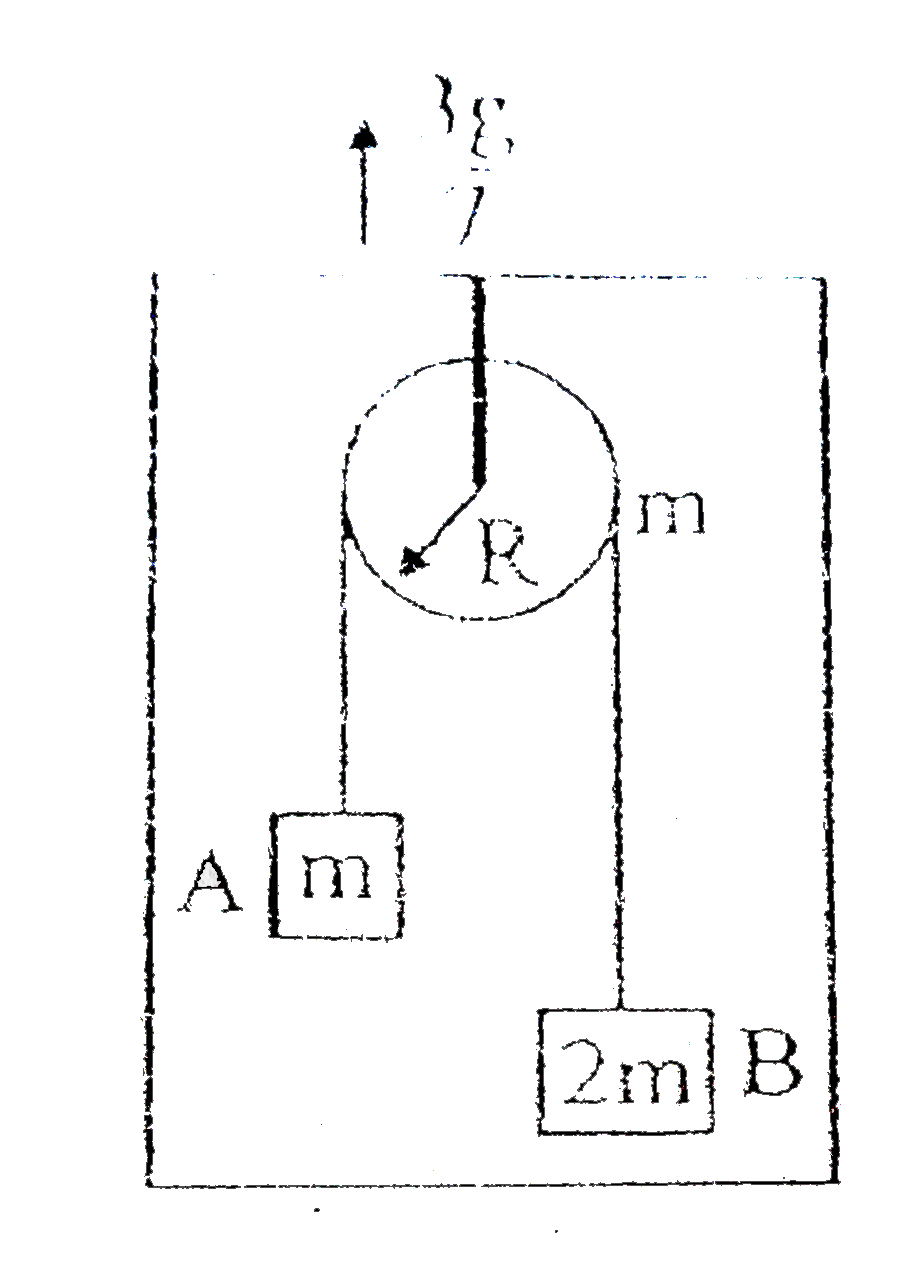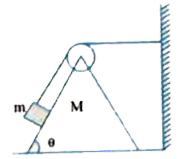In the arrangement shown in the figure, the acceleration of the pulley is, (Ignore friction)
 Solution in Telugu
Solution in Telugu
F4M
FM
Zero
F2M
The correct Answer is:D
Step by step video & image solution for In the arrangement shown in the figure, the acceleration of the pulley is, (Ignore friction) by Physics experts to help you in doubts & scoring excellent marks in Class 11 exams.
Updated on:21/07/2023Topper's Solved these Questions
- NEWTONS LAWS OF MOTION BOOK - AAKASH SERIESCHAPTER - NEWTONS LAWS OF MOTION EXERCISE - PRACTICE SHEET (EXERCISE - II) (LEVEL - II) (Straight Objective Type Questions)
7 Videos
- NEWTONS LAWS OF MOTION BOOK - AAKASH SERIESCHAPTER - NEWTONS LAWS OF MOTION EXERCISE - PRACTICE SHEET (EXERCISE - II) (LEVEL - II) ( More than one correct answer Type Questions )
4 Videos
- NEWTONS LAWS OF MOTION BOOK - AAKASH SERIESCHAPTER - NEWTONS LAWS OF MOTION EXERCISE - PRACTICE SHEET (EXERCISE - I) (LEVEL - II) (Matrix Matching Type Questions)
1 Videos
- MOTION IN A STRAIGHT LINEBOOK - AAKASH SERIESCHAPTER - MOTION IN A STRAIGHT LINEEXERCISE - Questions for Descriptive Answers
7 Videos
- OSCILLATIONBOOK - AAKASH SERIESCHAPTER - OSCILLATIONEXERCISE - QUESTIONS FOR DESCRIPTIVE ANSWERS
12 Videos
Similar Questions
The blocks A and B shown in the figure have masses MA=5kgandMB=4kg. The system is released from rest. The speed of B after A has travelled a distance 1 m along the incline is

View SolutionThere are two blocks A and B in contact with vertical and horizontal smooth surface respectively Acceleration of A and B are aaandaB respectively along their constrained direction of motions. Relation between aAandaB is (Assume sin 230=25 )

View SolutionMatch the two colums : Column - I indicates a situation & Column - II indicates the fundamental forces in physics
Column - IColumn -IIA) Force between two protonsP) Gravitational forceB) force between two neutronsQ) electromagnetic forceC) force between pen and fingerR) Strong nuclear forceD) Tension force in string S) Weak nuclear force
View SolutionThree tortoises are located at the vertices of an equilateral triangle whose side equals a They all start moving simultaneously with velocity v constant in modulus with the first tortoise heading continually for the second , the second for the third and the third for the first . They will meet after time
View SolutionThe spring shown in figure is unstretched when a man starts pulling on the cord. The mass of the block is M. If the man exerts a constant force F, find the amplitude and the time period of the motion of the block.

View SolutionConsider the situation shown in figure. All the surfaces are frictions and the string and the pulley are light. Find the magnitude of the acceleration of the two blocks.

View SolutionIn the figure shown neglecting friction and mass of pulley, what is the acceleration of mass B ?
View SolutionIn the system shown in figure mB=4kg , and mA=2kg . The pulleys are massless and friction is absent everywhere. The acceleration of block A is.

View SolutionIn the arrangement shown in the figure, the blocks have masses 3m,m and 2m , the friction is absent, the masses of the pulleys and the threads are negligible. Find the acceleration of mass 3m .
View SolutionFind the acceleration of the block of mass m in the arrangement shown in the following figures. The masses of the pulleys and the threads, as well as the friction are assumed to be negligible.
View SolutionA pulley is connected to the ceiling of an elevator by a massless rod. Two masses are connected as shown in figure. There is sufficient friction in the pulley axis. The acceleration of block w.r.t. earth is

View SolutionIn the arrangement shown in figure-2.124 pulley A and B are massless and the thread is inextensible. Mass of pulley C is equal to m. If friction in all the pulleys negligible, then :
View SolutionIn the arrangement shown in fig neglect the masses of pulleys and string and also friction Calculate acceleration of blocks A and B
View SolutionFor the arrangement shown in figure when the system is released, find the acceleration of wedge. Pulley and string are ideal and friction is absent.
View SolutionA block of mass m is arranged on the wedge as shown in figure . The wedge angle is θ. If the masses of pulley and thread and negligible and friction is absent , find the acceleration of the wedge

View SolutionIn the arrangement shown in the figure, the acceleration of the pulley is, (Ignore friction)

View Solution
